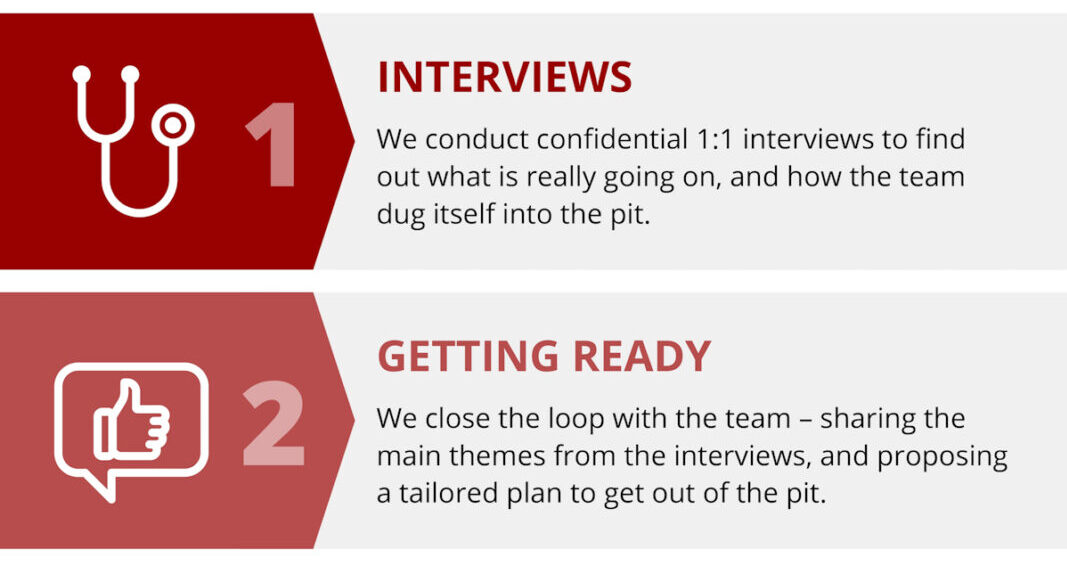How do you transform the dynamics of a team (leadership or otherwise) from dysfunctional to…
The ugly statistics of succession management

Research data from NACD, Korn Ferry and CEB are painting a shocking picture about the effectiveness of current succession management practices. How bad is it? Why? What should be done about it? And maybe most importantly, who should take the lead in driving the necessary change?
Article first written for the blog of HR People & Strategy (USA) – the executive arm of SHRM, the world’s largest HR membership organization. Also appeared on the blog of the Strategy Capability Network and, in a shorter form, on Canadian HR Reporter.
——————
Last week I attended with a client CEO a breakfast conference on the topic of CEO successions. After the session, we chatted about the myths and best practices the speakers had debunked or highlighted. On my way back to the office, I received an email from McKinsey Quarterly announcing an article about CEO successions. The coincidence prompted me to click on the link…
Shocking statistics
The article started with statistics that I found shocking: “Two-thirds of US public and private companies still admit that they have no formal CEO succession plan in place, according to a survey conducted by the National Association of Corporate Directors [NACD] last year. And only one-third of the executives who told headhunter Korn Ferry this year that their companies do have such a program were satisfied with the outcome”.
By extrapolation, we could therefore conclude that only 11% of US companies are satisfied with their CEO succession plans!
The world of work is changing
I wondered how senior HR leaders would react to this staggering ratio. So I posted the quote from McKinsey and the 11% implication to the forum of the Strategic Capability Network (Canadian affiliate of HR People & Strategy). One CHRO reacted to the above data with the following comment, which points to a broader problem with succession management – i.e. not just CEO successions:
[quote align=”left”]The current work environment is changing too fast for traditional succession planning approaches to work effectively.[/quote]She recommended research that The Corporate Executive Board Company (CEB) conducted on the topic.
38% of HR leaders and 36% of Senior Leaders who responded in 2013 to CEB’s worldwide survey agreed that “elimination of current succession process would not change quality of successors”.
Of course, it is not unusual for organizations to spend time, money and energy on things that don’t really yield value. However, we are talking about a strategic issue here: 61 % of the HR Leaders that CEB surveyed indicated that succession management was the top talent priority for their Board of Directors. The next item was way down the list with only 15% of responses. Furthermore these HR leaders overwhelmingly indicated (63%) that compared to five years ago, the scrutiny on succession management is intensifying.
CEB found that major leadership gaps existed all over the world – not just in the US.
If you haven’t already, I encourage you to read CEB’s research briefing titled “Succession Strategies for the New Work Environment”. Beyond the numbers, I liked the way they explained the data and the conclusions they drew. Here are the key points I took from it:
- Our work environment is changing – geographically dispersed workforces; more matrixed organization structures; greater amount of collaboration required; and higher volume of information.
- As a result, leadership is also changing – entirely new roles; high velocity changes in job responsibilities; increasingly wide scope of responsibilities; and teams of enterprise contributors.
- This explains why current succession management practices, which were designed for the old world, are ineffective – they are misaligned with the characteristics of the new world.
What should be done? Who should take the lead?
CEB recommends replacing the traditional “pipeline approach” to succession management with a “portfolio approach”. I am assuming other experts in the field are advocating different solutions, all with their own merits. The best approach for a given organization might be ill-suited for another one (one-size-fits-all solutions usually turn out to be fads).
Finding the right fix is obviously important. But another issue might be even more critical: who should take the lead in reinventing succession management?
As I ponder this question, my mind goes back to that breakfast conference about CEO successions. One of the speakers talked about the importance of a strong partnership between current CEO, CHRO and head of the Board of Directors’ HR Committee. I liked this point because I know from experience that unleashing the power of partnering is critical to succeed with change.
It doesn’t really matter who takes the lead in establishing the partnership – as long as someone does. If the CEO or head of HR Committee haven’t already started the process, then the CHRO should most definitely seize the opportunity.
As I explained in another blog post (see link at the bottom), I often use the sentence “I need your help” when driving change. I believe these four words are the most powerful in change management. Among other things, they help kick-start partnerships for change. Hence the CHRO could approach the CEO and head of HR Committee and say something along the lines of:
[quote align=”left”]Succession management is not working; we need to change our approach; here is what I think we should do… What do you think? I need your help – first to decide what the best solution is for our company; and then to turn it into reality…[/quote]That would sound like a good start to me.
Extra 2% growth in revenue & profit – and more
According to CEB, “On average, portfolio strategies are twice as impactful as pipeline strategies, leading to an extra 2% growth in year-over-year revenue and profit.”
I never get too excited about top line growth; but I love it when the bottom line is increasing. A couple of extra percentage points from one single strategic change initiative – that is not too shabby. From this financial perspective alone, reinventing succession management seems to be a worthwhile undertaking.
But as we discussed above there is also: the increased scrutiny from Board of Directors; and the large number of leaders who are dissatisfied with the current approach.
Therefore, it looks like the time is prime for a new approach to succession management. The CEO, CHRO and head of HR Committee should reach out to each other. In partnership, they can transform succession management for the new world.
P.S. here is a link to a little story that illustrates the power of the words “I need your help” when driving change.
Copyright © 2015 by ORCHANGO. All rights reserved. | Photo credit: ©Flickr.com/ITU Pictures
ABOUT HRPS
HR People & Strategy (HRPS) is a strategically focused, ground-breaking network of influential HR executives and innovative HRM professionals representing the world’s most prominent organizations. HRPS is regarded by many as the premier professional organization focused on the intersection of people and strategy. HRPS is affiliated with the Society for Human Resource Management (SHRM), the world’s largest HR association. www.hrps.org.




This Post Has 0 Comments